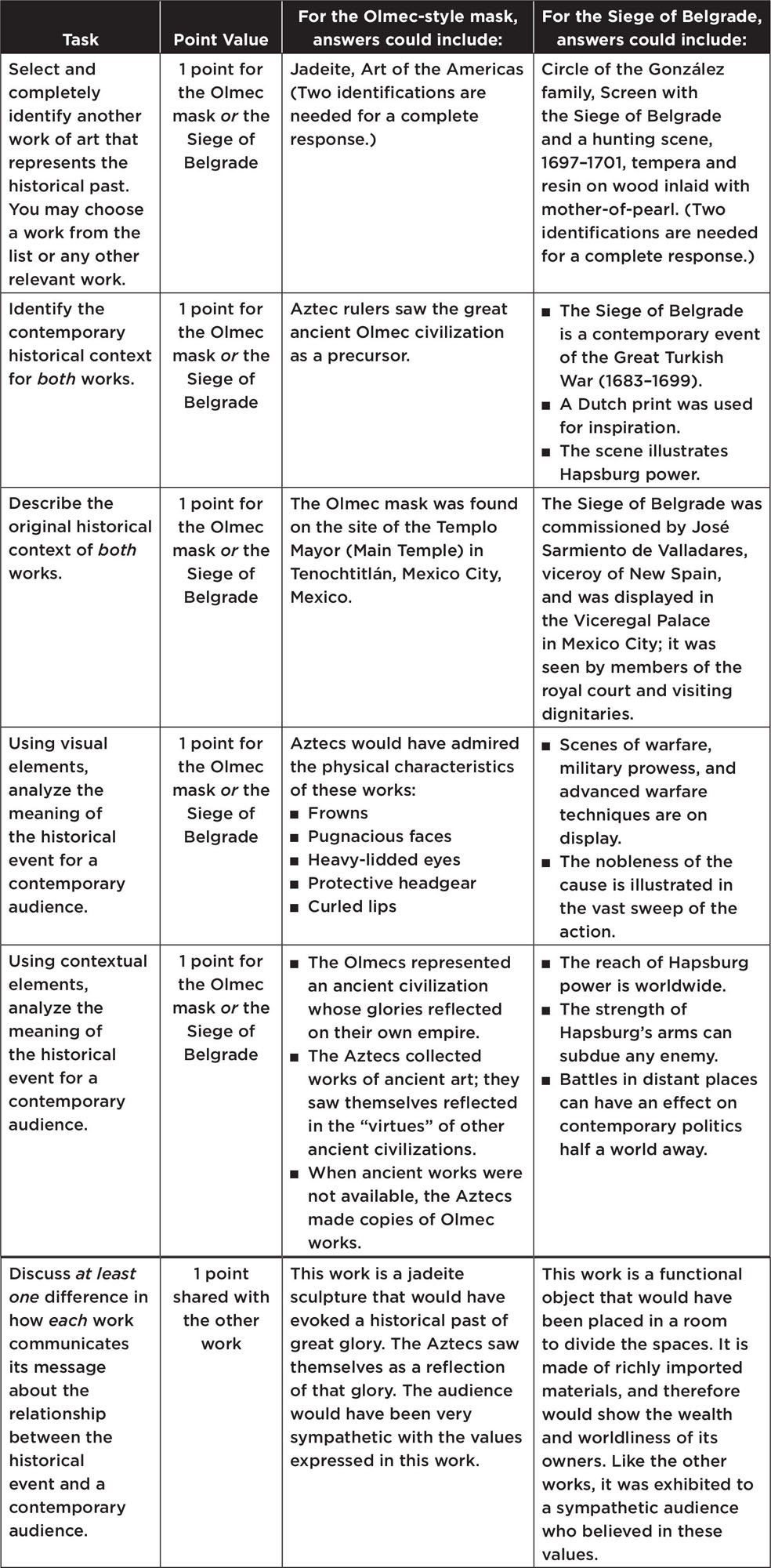Content Area: Later Europe and Americas, 1750–1980 C.E.
TIME PERIOD: 1789–1848
The French Revolution of 1789 and the European revolts of 1848 form a neat, although not completely accurate, boundary for Romanticism.
ENDURING UNDERSTANDING: The culture, beliefs, and physical settings of a region play an important role in the creation, subject matter, and siting of works of art.
Learning Objective: Discuss how the culture, beliefs, or physical setting can influence the making of a work of art. (For example: Barry and Pugin, Palace of Westminster)
Essential Knowledge:
■Europe and the Americas experience great innovation in economics, industrialization, war, and migration. There is a strong advancement in social issues.
■Artists in the Romantic period interpreted Enlightenment values in a new light.
ENDURING UNDERSTANDING: Cultural interaction through war, trade, and travel can influence art and art making.
Learning Objective: Discuss how works of art are influenced by cultural interaction. (For example: Ingres, La Grande Odalisque)
Essential Knowledge:
■Architecture is expressed in a series of revival styles.
■Artists are exposed to diverse, sometimes exotic, cultures as a result of colonial expansion.
ENDURING UNDERSTANDING: Art and art making can be influenced by a variety of concerns including audience, function, and patron.
Learning Objective: Discuss how art can be influenced by audience, function, and/or patron. (For example: Delacroix, Liberty Leading the People)
Essential Knowledge:
■Commercial galleries become important. Museums open and display art. Art sells to an ever-widening market.
■The Salon in Paris retains its leading role in the display of art.
■Women artists become increasingly important.
ENDURING UNDERSTANDING: Art making is influenced by available materials and processes.
Learning Objective: Discuss how material, processes, and techniques influence the making of a work of art. (For example: Daguerre, Still Life in Studio)
Essential Knowledge:
■Architecture is affected by new materials and new modes of construction.
■Artists use new media including photography, lithography, and mass production.
ENDURING UNDERSTANDING: Art history is best understood through an evolving tradition of theories and interpretations.
Learning Objective: Discuss how works of art have had an evolving interpretation based on visual analysis and interdisciplinary evidence. (For example: Delacroix, Liberty Leading the People)
Essential Knowledge:
■Audiences and patrons were often hostile to art made in this period. Art history as a science continues to be shaped by theories, interpretations, and analyses applied to these new art forms.
HISTORICAL BACKGROUND
The revolutionary spirit of casting off oppressors and installing “Liberty, Equality, and Fraternity” created a dynamic for freedom not just in France, but throughout Europe, and in North and South America as well. However, the French Revolution itself, even though well-intentioned, devolved into the chaos of the Reign of Terror and eventually the Napoleonic Wars.
Nonetheless, the philosophical powers that were unleashed by these revolutionary impulses had long-term positive effects on European life, which are embodied in the Romantic spirit. Romantics espoused social independence, freedom of individual thought, and the ability to express oneself openly. This was manifest not only in the political battles of the day, but also in the societal changes in general education, social welfare, and a newfound expression in the arts. As a reaction against the Enlightenment, the Romantics would argue that you should trust your heart, not your head.
Patronage and Artistic Life
The Romantic artist was a troubled genius, deeply affected by all around him or her—temperamental, critical, and always exhausted. Seeking pleasure in things of greatest refinement, or adventures of audacious daring, the Romantic was a product of the extremes of human endeavor. Turner, for example, liked to be tied to the deck of a ship in a storm so that he could bring a greater sense of the sublime to his paintings.
Stereotypically, Romantic artists were loners who fought for important causes. Delacroix painted a number of great political paintings, and Goya understood that human folly exists on the side of the villain and the hero alike.
Romantics enjoyed a state of melancholy, that is, a gloomy, depressed, and pensive mindset that is soberly thoughtful. This can be seen in a series of nineteenth-century portraits. Romantics also championed the antihero, a protagonist who does not have the typical characteristics of a hero, often shunning society and rarely speaking, but capable of great heroic deeds.
The greatest artistic invention of the period was the development of photography. Since this was a new art form, there were no academies, no salons, and no schools from which to learn the craft. Even so, the mechanical nature of the camera prejudiced the public against viewing photographs as works of art. Anyone with a camera and a how-to book could open a photo shop. Because of photography’s universality, and because there were no preconceived notions about photographers creating great art, marginalized populations, including women, easily entered the field. Some of the most important advances in the history of photography were made by these groups; it was the first instance of equal opportunity in the arts.
REVIVAL ARCHITECTURE
Nineteenth-century architecture is characterized by a revival of nearly every style of the past. Historicism and yearning for past ideals fueled a reliance on the old, the tried, and the familiar.
There was symbolism in this. The Middle Ages represented a time when religion was more devout and sincere, and life was more centered around faith. Modern living, it was felt, was corrupted by the Industrial Revolution. People were so nostalgic for medieval ruins that when there were none handy, they had ruins built so that Romantic souls could ponder the loss of civilization.
Medieval art may have been the favorite theme to revive, but it was by no means the only one. Egyptian, Islamic, and even Baroque architecture was updated and grafted onto structures that had no connection with their original inspiration. Bath houses in England are done in the Islamic style; opera houses in Paris are Baroque; office buildings in the United States are Gothic; a monument to George Washington in Washington, D.C., is an Egyptian obelisk.
The use of iron in architecture, which started in the Neoclassical period, became more important in the Romantic. Architects concerned with reviving past architectural styles like Gothic or Romanesque used ironwork, but hid it under the skin of the building. More adventuresome architects used stone on the exterior, but were unafraid of iron as an exposed structural element on the interior. Progressive architects found the elegance and malleability of ironwork irresistible, especially when combined with walls of glass.
Charles Barry and Augustus Pugin, Palace of Westminster (Houses of Parliament), 1840–1870, limestone, masonry, and glass, London (Figures 20.1a and 20.1b)
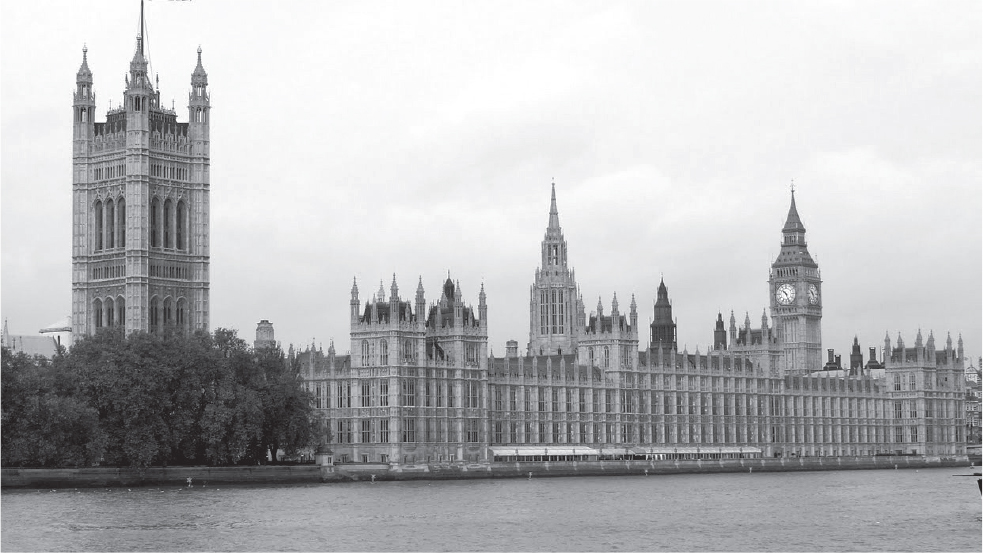
Figure 20.1a: Charles Barry and Augustus Pugin, Palace of Westminster (Houses of Parliament), 1840–1870, limestone, masonry, and glass, London
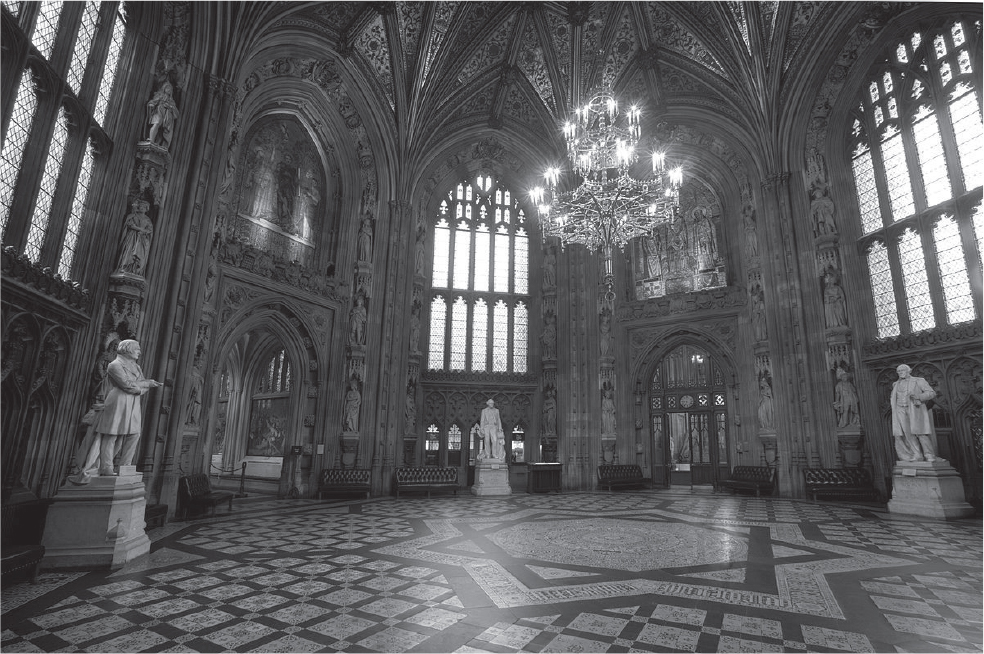
Figure 20.1b: Central lobby of the Houses of Parliament
Function
■The building holds the two chambers of the United Kingdom’s government: the House of Commons and the House of Lords; today the House of Lords is largely a ceremonial body.
Form
■Enormous structure of 1,100 rooms, 100 staircases, 2 miles of corridors.
■It is a modern office building cloaked in medieval clothes.
■Barry, a classical architect, accounts for the regularity of plan.
■Pugin, a Gothic architect, added Gothic architectural touches to the structure.
■The profusion of Gothic ornament (pinnacles, spires, vertical thrust) is greater than would appear in an original Gothic building.
■Modern adaptation of a Gothic building includes innovations like air ventilation shafts.
Context
■Competition held in 1835 for a new Houses of Parliament after the old one burned down in 1834.
■There were 97 entrants: 91 in the Perpendicular Gothic style and 6 in the Elizabethan style; these styles were thought to be native English styles suitable for a new capitol building.
■Big Ben is a clock tower; in a sense a village clock for all of England.
■The building is a reaction against art as a mass-produced product of the Industrial Revolution; it has a hand-crafted look.
Content Area Later Europe and Americas, Image 112
■Cross-Cultural Comparisons for Essay Question 1: Government Centers
–Nan Madol (Figures 28.1a, 28.1b)
–Versailles (Figures 17.3a, 17.3b, 17.3c)
–Forbidden City (Figures 24.2a, 24.2b, 24.2c, 24.2d)
Central Lobby
■Situated between the House of Commons and the House of Lords.
■Meant to be a space where constituents can meet their member of Parliament.
■The metal grilles on the doorways were originally in the House of Commons and marked off the spots where women could be seated to watch Parliament; now they are symbols of the suffrage movement.
■The grilles, originally installed to ensure that members of Parliament were not distracted by the sight of women watching them at work, were finally removed permanently from the gallery and placed in the Central Lobby following a vote in the House of Commons in August 1917.
■The central octagonal space contains statues of the kings and queens of England and Scotland.
■Four large mosaics, one over each doorway; in each mosaic a saint represents a different area of the United Kingdom:
–England: Saint George.
–Scotland: Saint Andrew.
–Wales: Saint David.
–Northern Island: Saint Patrick.
Westminster Hall (Figure 20.1c)

Figure 20.1c: Westminster Hall, 1097–1099; ceiling 1390s, stone and wood, London, England
■When the old Houses of Parliament burned to the ground, this hall survived and became the last vestige of the medieval parliament building.
■Perpendicular Gothic style of Westminster Hall inspired the design of the Houses of Parliament.
■See Figure 12.5, page 261.
Web Source http://www.parliament.uk/about/living-heritage/building/palace/
ROMANTIC PAINTING
Artists were impressed by the sublime in art. What the Enlightenment saw as ordered, symmetrical, logical, and scientific—and therefore beautiful—the Romantics viewed with disdain.
Artists wanted to create the fantastic, the unconscious, the haunted, and the insane. Some visited asylums and depicted their residents. Others painted the underside of the subconscious state a hundred years before Freud.
Photography had an enormous impact on painters. Some fled painting, feeling that their efforts could not match the precision and speed of a photograph. Others more wisely saw that pictures could be a great aid in a painter’s work, from hiring a model to capturing a landscape. Painters eventually learned that photography was a new art form that was not in competition with the long-standing tradition of painting.
Artists, like everyone else, were caught up in European and American revolutions. The fight for Greek independence was particularly galvanizing for European intellectuals. Political paintings became important, expressing the artist’s solidarity with a social movement or a political position. Delacroix and Goya are among many who create memorable political compositions.
Even landscape painting had a political agenda. No longer content to paint scenes for their physical beauty or artistic arrangement, landscape painters needed to make a contemporary statement. Perhaps the paintings were expressions against the Industrial Revolution, or as in the case of Cole, an answer to criticism on how Americans had polluted their land.
Francisco de Goya, And There’s Nothing to Be Done (Y no hai remedio), from The Disasters of War (Les Desastres de la Guerra), Plate 15, 1810–1823 (published 1863), etching, drypoint, burin, and burnishing, Metropolitan Museum of Art, New York (Figure 20.2)

Figure 20.2: Francisco de Goya, And There’s Nothing to Be Done (Y no hai remedio), from The Disasters of War (Les Desastres de la Guerra), Plate 15, 1810–1823 (published 1863), etching, drypoint, burin, and burnishing, Metropolitan Museum of Art, New York
Disasters of War
Context
■Original title: “Fatal Consequences of Spain’s Bloody War with Bonaparte and Other Emphatic Caprices.”
■Artwork was critical of the French occupation of Spain and the subsequent Spanish rulers.
■Influenced by Spain’s continuous warfare.
■Eighty etchings and aquatints.
■Published in 1863, 35 years after the artist’s death.
■Explores themes of war, famine, and politics.
Technique
■Goya used a combination of etching and drypoint.
■Etching gives the work fine details.
■Drypoint is added to the metal etched plate. The rough burr at the sides of the incised lines yield a velvety black tone in the print.
■The effect is a very rich black and white surface.
And There’s Nothing to Be Done
■Bitterly ironic and sardonic.
■Guns at very close-range point toward the victims, assumedly Spanish patriots, who will be summarily killed by French soldiers.
■The mangled body on the ground accentuates the sense of despair.
■Are civilians or soldiers being shot? Ambiguity intentional.
■Central figure is seen in a Christ-like pose.
■Compositional elements reference Goya’s painting called The Third of May 1808.
Content Area Later Europe and Americas, Image 106
Web Source http://metmuseum.org/toah/works-of-art/32.62.17/
■Cross-Cultural Comparisons for Essay Question 1: War and Remembrance
–Lin, Vietnam Veterans Memorial (Figures 29.4a and 29.4b)
–Bayeux Tapestry (Figures 11.7a and 11.7b)
–Alexander Mosaic (Figure 4.20)
Jean-Auguste-Dominique Ingres, La Grande Odalisque, 1814, oil on canvas, Louvre, Paris (Figure 20.3)
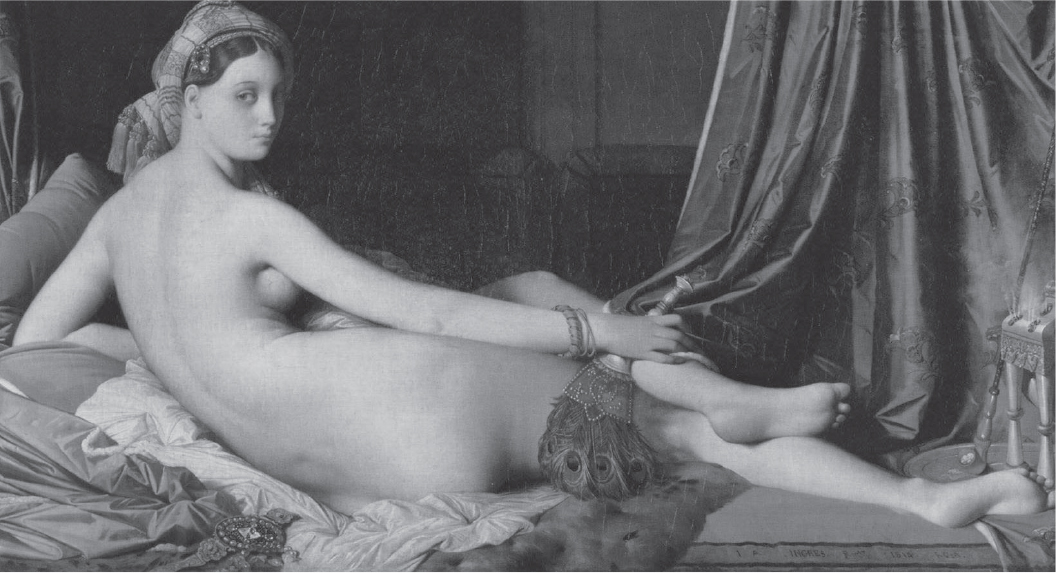
Figure 20.3: Jean-Auguste-Dominique Ingres, La Grande Odalisque, 1814, oil on canvas, Louvre, Paris
Form
■Inconsistent arrangement of limbs: rubbery arm, elongated back, odd placement of leg, one arm longer than other.
■Mannerist-like elegant distrortions.
■Raphael-like face.
■Not a traditional frontal nude (cf. Titian, Figure 16.4).
Patronage and Reception
■Commissioned by Caroline Murat, Napoleon’s sister, Queen of Naples.
■Exhibited at the Salon of 1819; the critics did not understand Ingres’s style; he was criticized for his disregard for anatomical reality, a trait that set him apart from his teacher, Jacques-Louis David.
Context
■Turkish elements: incense burner, peacock fan, tapestry-like turban, hashish pipe; expresses an exoticism; Orientalism was a form of exoticism.
■Heavily influenced by Italian Mannerism in the figure style (cf. Pontormo, Figure 16.5); perhaps the decorative motifs were influenced by Persian illuminated manuscripts (Figure 9.9).
Content Area Later Europe and Americas, Image 107
Web Source http://www.louvre.fr/en/oeuvre-notices/une-odalisque
■Cross-Cultural Comparisons for Essay Question 1: Female Figure
–Tlatilco female figure (Figure 1.5)
–Neshat, Rebellious Silence (Figure 29.14)
–Pwo mask (Figure 27.8)
Eugène Delacroix, Liberty Leading the People, 1830, oil on canvas, Louvre, Paris (Figure 20.4)
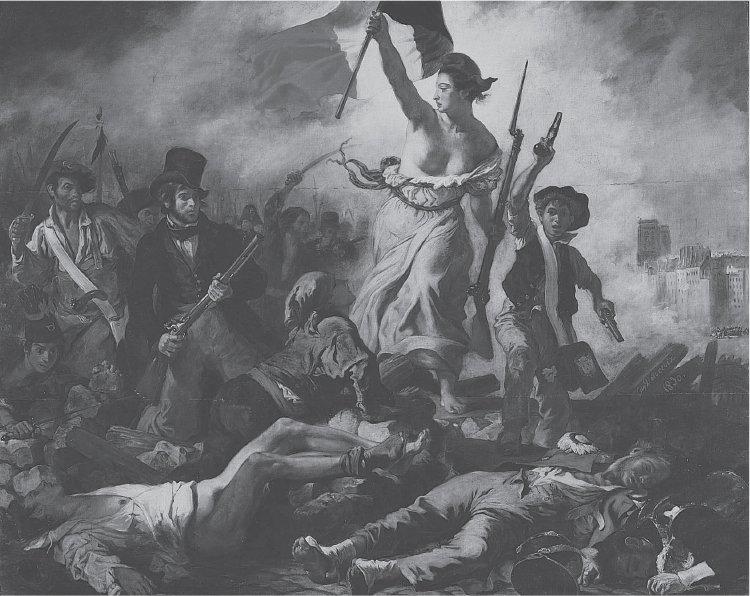
Figure 20.4: Eugène Delacroix, Liberty Leading the People, 1830, oil on canvas, Louvre, Paris
Form
■Strong pyramidical structure.
■Red/white/blue (colors of the French flag) echo throughout the painting.
Content
■Liberty, with breast exposed and wearing no shoes, charges symbolically over the barricades.
■Liberty wears a red Phrygian cap, worn in the ancient world by freed slaves; portrayed as rebellious, vibrant, and fiery; she references the French Revolution of 1789.
■Notre Dame Cathedral is seen through the smoke on the far right; the French tricolor is raised on its tower.
■The Parisian landmark of Notre Dame is mixed in with the true historical event and the allegorical and symbolic figures.
Context
■The painting symbolically depicts the July Revolution of 1830; Liberty with the French tricolor in her hand marches over the barricades to overthrow government soldiers.
■The painting memorializes the overthrow of the French government of Charles X, the last Bourbon king of France, in favor of the “citizen king” Louis-Philippe.
■The child with pistols symbolizes the role of students in the revolt; the middle class is represented by a man with a top hat and carrying a rifle; the lower classes are symbolized by the man at extreme left with a sword in his hand and a pistol in his belt.
History
■Exhibited at the Salon of 1831 and then acquired by the French state; not exhibited publicly for twenty-five years because of its subversive message.
Content Area Later Europe and Americas, Image 108
Web Source http://www.louvre.fr/en/oeuvre-notices/july-28-liberty-leading-people
■Cross-Cultural Comparisons for Essay Question 1: National Symbols
–King Menkaura and queen (Figure 3.7)
–Chairman Mao en Route to Anyuan (Figure 24.7)
–Golden Stool (Figure 27.4)
Joseph Mallord William Turner, Slave Ship (Slavers Throwing Overboard the Dead and Dying, Typhoon Coming On), 1840, oil on canvas, Museum of Fine Arts, Boston (Figure 20.5)
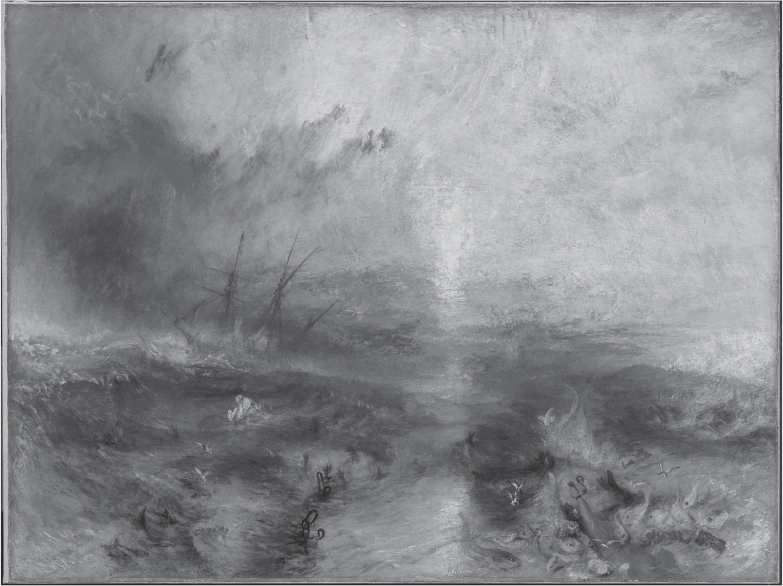
Figure 20.5: Joseph Mallord William Turner, Slave Ship (Slavers Throwing Overboard the Dead and Dying, Typhoon Coming On), 1840, oil on canvas, Museum of Fine Arts, Boston
Form
■Color expresses emotions.
■Rapid brushwork.
■Recognizable forms—the ship, the hands, the chains—are reduced in size and pale in comparison with the mightiness of the turbulent seascape.
■The bloody sunset acts as a symbol of the scene taking place.
■Use of the sublime enhances dramatic impact.
Context
■Exhibited at the Royal Academy in 1840, with an excerpt from Turner’s own poem called “The Fallacies of Hope:”
“Aloft all hands, strike the top-masts and belay;
Yon angry setting sun and fierce-edged clouds
Declare the Typhon’s coming.
Before it sweeps your decks, throw overboard
The dead and dying—ne’er heed their chains
Hope, Hope, fallacious Hope!
Where is thy market now?”
■Based on a true story, an event in 1781 in which a slave ship, the Zong, sailed for the Americas full of slaves.
■The slaves were insured against accidental drowning, but not insured against sickness; a policy instituted to force captains to treat slaves humanely.
■Knowing that he would not collect insurance money on sick and dying slaves, the captain cast them overboard.
■Turner’s painting was inspired by an account of the scandal published in a book by Thomas Clarkson, which had been reprinted in 1839.
■England freed the slaves in 1833 by an act of Parliament, however, there were exceptions, which were not addressed until 1843.
■Nature responds to the inhumanity of the slave trade.
Content Area Later Europe and Americas, Image 111
■Cross-Cultural Comparisons for Essay Question 1: Artistic Renderings of Historical Events
–Walker, Darkytown Rebellion (Figure 29.21)
–Chairman Mao en Route to Anyuan (Figure 24.7)
–Lawrence, Migration of the Negro, No. 49 (Figure 22.19)
Thomas Cole, The Oxbow (The View from Mount Holyoke, Northampton, Massachusetts, after a Thunderstorm), 1836, oil on canvas, Metropolitan Museum of Art, New York (Figure 20.6)
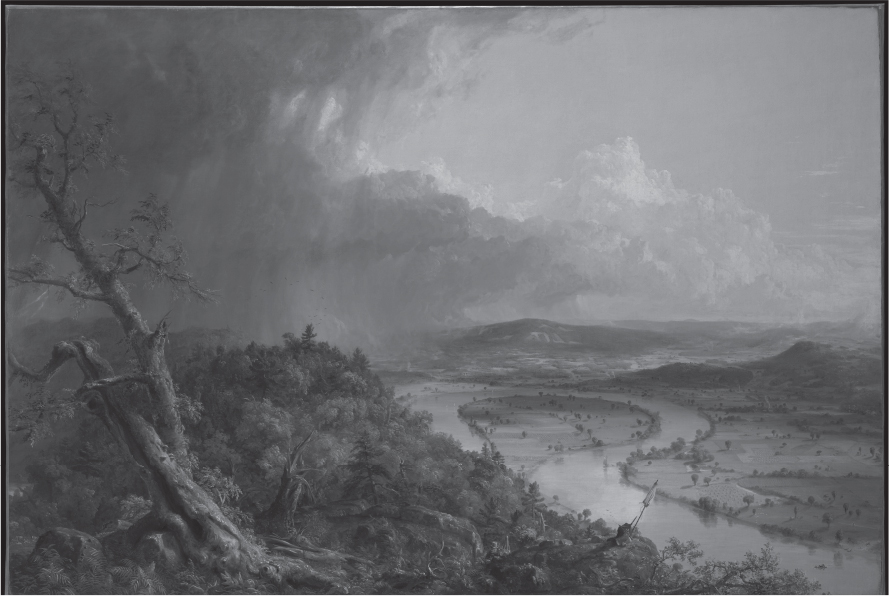
Figure 20.6: Thomas Cole, The Oxbow (The View from Mount Holyoke, Northampton, Massachusetts, after a Thunderstorm), 1836, oil on canvas, Metropolitan Museum of Art, New York
Form
■Actual view in Massachusetts.
■Landscape divided into two clearly contrasting areas: the Romantic landscape on the left and the Classical landscape on the right.
■On the right, man’s touch is light: cultivated fields, boats drifting down the river.
Function
■Painted as reply to a British book that alleged that Americans had destroyed a wilderness with industry.
■Painted for an exhibit at the National Academy of Design; hence the unusually large size.
Context
■Illustrates the nineteenth-century American belief in Manifest Destiny.
■Cole is the founder of the Hudson River School.
■Cole’s self-portrait can be seen in the foreground in a dense forest.
■The wild landscape includes broken trees and a storm: the sublime.
■Cole at the center of the composition, between the two worlds expressed in the painting; challenges Americans to be good stewards of the land.
Content Area Later Europe and Americas, Image 109
Web Source http://metmuseum.org/toah/works-of-art/08.228/
■Cross-Cultural Comparisons for Essay Question 1: Nature
–Korin, White and Red Plum Blossoms (Figures 25.4a, 25.4b)
–Su-nam, Summer Trees (Figure 29.6)
–Ryoan-ji (Figures 25.2a, 25.2b, 25.2c)
THE DEVELOPMENT OF PHOTOGRAPHY
Experiments in photography go back to the seventeenth century, when artists used a device called a camera obscura (Figure 20.7) to focus images in a box so that artists could render accurate copies of the scene before them. Gradually, photosensitive paper was introduced that could replicate the silhouette of an object when exposed to light. These objects were called photograms, which yielded a primitive type of photography that captured outlines of objects and little else.
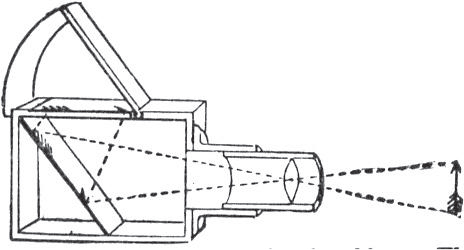
Figure 20.7: Camera obscura
Modern photography was invented in two different places at the same time: France and England. The French version, called the daguerreotype after its inventor Louis Daguerre, was a single image that is characterized by a sharp focus and great clarity of detail. Englishman William Talbot invented the calotype, which, though at first inferior in quality to the French version, was less costly to make and had an accompanying negative that could generate an unlimited number of copies from the original. Both men showed their inventions to scientific conventions in January 1839.
Photography spread quickly, and technological advances followed almost as fast. For example, shutter speeds were made faster so that sitters could pose for pictures without blurring, and the cameras themselves became increasingly portable and user-friendly. The advantages to photography were obvious to everyone: It went everywhere a person could go, capturing and illustrating everything from the exotic to the commonplace.
Louis-Jacques-Mande Daguerre, Still Life in Studio, 1837, daguerreotype, French Photographic Society, Paris (Figure 20.8)

Figure 20.8: Louis-Jacques-Mande Daguerre, Still Life in Studio, 1837, daguerreotype, French Photographic Society, Paris
Form
■Photograph reproduces a variety of textures: fabric, wicker, plaster, framed print, etc.
■Inspired by painted still lifes, such as vanitas paintings.
Context
■New art form proclaimed while referencing older art forms.
■Daguerreotypes have a shiny surface and a sharp eye for detail.
■No negative; therefore, copies could not be made.
■Long exposure times required.
■Produced on a metallic surface; photos have a glossy finish.
Content Area Later Europe and Americas, Image 110
Web Source http://www.metmuseum.org/toah/hd/dagu/hd_dagu.htm
■Cross-Cultural Comparisons for Essay Question 1: Still Lifes
–Ruysch, Fruit and Insects (Figure 17.11)
–Matisse, Goldfish (Figure 22.1)
VOCABULARY
Calotype: a type of early photograph, developed by William H. F. Talbot that is characterized by its grainy quality. A calotype is considered the forefather of all photography because it produces both a positive and a negative image
Camera obscura: (Latin, meaning “dark room”) a box with a lens which captures light and casts an image on the opposite side (Figure 20.7)
Caprice: usually a work of art that is an architectural fantasy; more broadly any work that has a fantasy element (Figure 20.2)
Daguerreotype: a type of early photograph, developed by Louis Daguerre that is characterized by a shiny surface, meticulous finish, and clarity of detail. Daguerreotypes are unique photographs; they have no negative (Figure 20.8)
Drypoint: an engraving technique in which a steel needle is used to incise lines in a metal plate. The rough burr at the sides of the incised lines yields a velvety black tone in the print (Figure 20.2)
Odalisque: a woman slave in a harem (Figure 20.3)
Photogram: an image made by placing objects on photosensitive paper and exposing them to light to produce a silhouette
School: a group of artists who share the same philosophy, work around the same time, but not necessarily together
The sublime: any cathartic experience from the catastrophic to the intellectual that causes the viewer to marvel in awe, wonder, and passion (Figure 20.5)
SUMMARY
A spirited cultural movement called Romanticism inspired artists to move beyond former boundaries and express themselves as individuals. Romantic artists introduce new subjects such as grand political canvases, the world of the unconscious, and the awesome grandeur of nature.
Romantics were influenced by the invention of photography, which was used by some artists as a tool for preserving such things as a model’s pose or a mountain landscape. Photography’s immediacy and realistic impact made it a sensation from its inception, causing the art form to spread quickly among all classes of people.
Early-nineteenth-century architects sought to revive former artistic styles and graft them onto modern buildings. It is common to see an office building, like the Houses of Parliament, wrapped in Gothic clothes. This yearning for the past is a reaction against the mechanization of the Industrial Revolution and a way of life that seemed to have permanently passed from the scene.
PRACTICE EXERCISES
Multiple-Choice
1.La Grande Odalisque by Jean-Auguste-Dominique Ingres from 1814 was inspired by
(A)a deep use of spatial recession formulated in the High Renaissance
(B)political controversy raging in Europe over the question of slavery
(C)a figure style reminiscent of Italian Mannerism
(D)a brushstroke used in the Rococo
2.Liberty Leading the People by Eugène Delacroix depicts in allegorical terms a moment from the
(A)French Revolution of 1789
(B)American Revolution of 1776
(C)Parisian uprising of 1830
(D)Franco-Prussian War of 1870
3.The Slave Ship by Joseph M. W. Turner is based on
(A)the novels of Herman Melville
(B)the sinking of the French frigate The Medusa
(C)events related to the eighteenth-century ship called the Zong
(D)the American Civil War and the passage of the Emancipation Proclamation
4.Thomas Cole’s paintings have historical allusion to contemporary issues concerning
(A)slavery in the American South
(B)Manifest Destiny
(C)the building of the railroads and their effect on American culture
(D)the treatment of American Indians as anthropological specimens
5.Photography was practiced by marginalized communities, women and minorities, at its earliest stage of development because
(A)the French salons gave their consent for minorities to practice what they considered an inferior artform
(B)the price of the materials to produce photographs was carefully regulated by the governments of Europe
(C)patrons insisted on female photographers because they were less threatening
(D)as there were no academies or art studios for photography, there were no institutions that could ban minorities.
Long Essay
Practice Question 1: Comparison
Suggested Time: 15 minutes
This work is Joseph Turner’s The Slave Ship (Slavers Throwing Overboard the Dead and Dying, Typhoon Going On), 1840, oil on canvas.
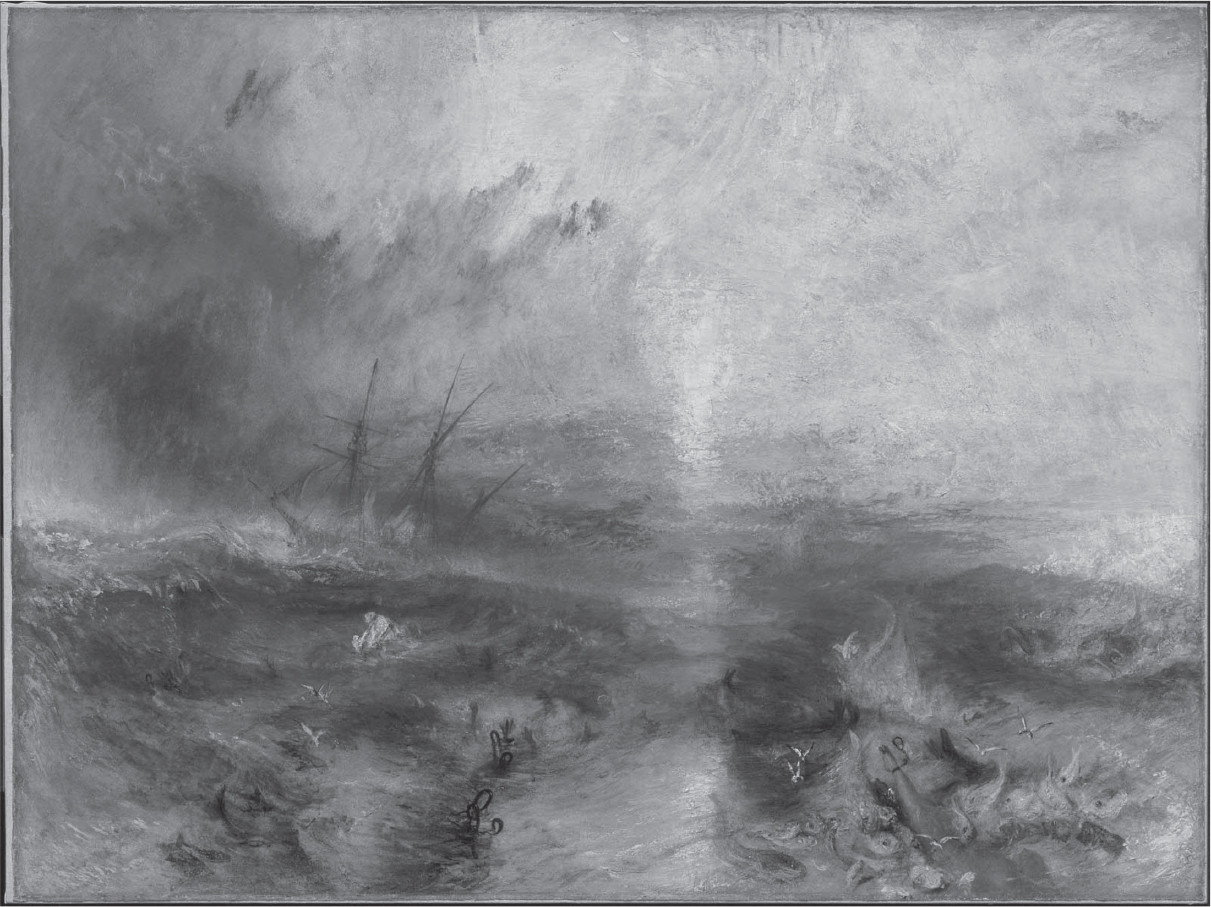
This work, like many works of art, is intended to recreate a scene from the historical past to comment on the present.
Select and completely identify another work of art that represents the historical past. You may choose a work from the list or any other relevant work.
Identify the contemporary historical context for both works.
Describe the original historical context of both works.
Using visual elements, analyze the meaning of the historical event for a contemporary audience.
Using contextual elements, analyze the meaning of the historical event for a contemporary audience.
Discuss at least one difference in how each work communicates its message about the relationship between the historical event and a contemporary audience.
Olmec-style mask
Siege of Belgrade
ANSWER KEY
1.C
2.C
3.C
4.B
5.D
ANSWERS EXPLAINED
Multiple-Choice
1.(C) Elongated figures, often in complex poses, such as those seen in the works of Pontormo, generally influenced Ingres’s approach to painting the human form.
2.(C) Liberty Leading the People depicts the Parisian uprising of 1830, which installed Louis-Philippe as “Citizen King” of France.
3.(C) Slave Ship depicts the journey of an actual ship, the Zong, which traveled to the New World laden with slaves. The slaves were insured against accidental drowning, but they weren’t insured against sickness. Knowing that he would not collect insurance money on sick and dying slaves, the captain cast them overboard.
4.(B) The notion of Manifest Destiny, that it was in the United States’ interests to expand across the North American continent, is expressed in many of Cole’s works.
5.(D) Because photography is mechanical, it was looked down upon by the art establishment, which did not accept it as a true art form. As a result, minorities were able to practice it because there were no official salons or academies to keep them out.
Long Essay Rubric
Task |
Point Value |
For The Slave Ship, answers could include: |
Select and completely identify another work of art that represents the historical past. You may choose a work from the list or any other relevant work. |
— |
— |
Identify the contemporary historical context for both works. |
1 point for The Slave Ship |
Although slavery had been repealed throughout the British Empire, contemporary Englishmen were concerned about the abuses of a slavery system and its after effects. |
Describe the original historical context of both works. |
1 point for The Slave Ship |
■This work is based on an event in 1781 in which a slave ship, the Zong, sailed for the Americas full of slaves. ■The slaves were insured against accidental drowning but not insured against sickness, a policy instituted to force the captain to treat slaves humanely. ■Knowing that he could not collect insurance money on sick and dying slaves, the captain cast them overboard. |
Using visual elements, analyze the meaning of the historical event for a contemporary audience. |
1 point for The Slave Ship |
■Symbolism is found in the blood-red sky and the bloody waters. ■Hands, chains, sharks, and legs appearing in the foreground signal death by drowning and from devouring fish. ■These visual symbols represent the guilt that slavery has passed on to a generation of the British public. ■The ship seems to be sinking under the weight of its guilt. |
Using contextual elements, analyze the meaning of the historical event for a contemporary audience. |
1 point for The Slave Ship |
■Turner’s painting was inspired by an account of the scandal published in a book by Thomas Clarkson, which had been reprinted in 1839. ■England abolished slavery in 1833 by an act of Parliament; however, there were exceptions, which were not addressed until 1843. |
Discuss at least one difference in how each work communicates its message about the relationship between the historical event and a contemporary audience. |
1 point shared with the other work |
The Slave Ship is oil on canvas, exhibited at the Royal Academy in 1840, owned by an art critic John Ruskin. This work was for an audience of elites about a subject they would have been sympathetic toward. |
